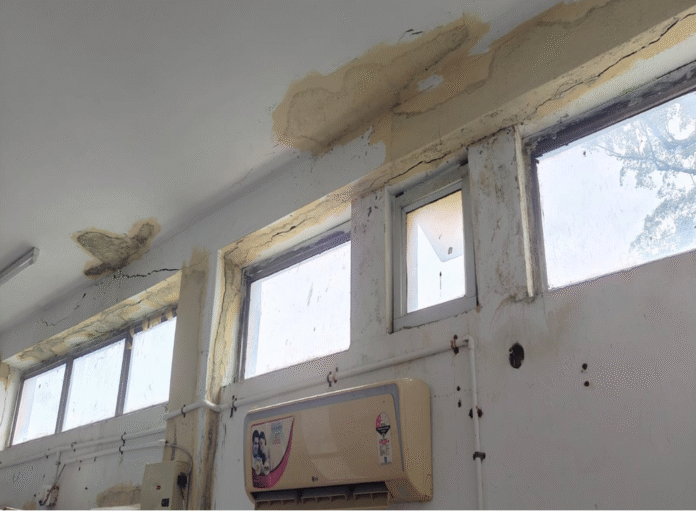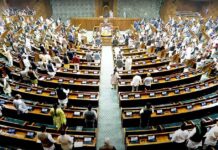Mayabunder, June 28
In the heart of North and Middle Andaman, where a district hospital is meant to be a lifeline for thousands, patients today walk into a system that appears to be crumbling, literally.
At the RP Hospital in Mayabunder, the operation theatre ceiling leaks during the rains, plaster dust falls from cracked slabs, and corroded beams now shadow surgical beds. For those seeking care, the infrastructure is not just inadequate, it’s becoming actively unsafe.
Images and internal reports accessed by The Wave Andaman reveal a disturbing state of affairs. An outdated anesthesia machine with non-functional parts stands in the OT room. Dialysis patients have to depend on one outdated machine out of three. Two vertical autoclave machines, meant to sterilize surgical tools, remain unused, simply because surgeries are not being conducted in the first place due to lack of specialists.
In a hospital meant to serve an entire district, essential posts are glaringly vacant. Out of 131 sanctioned positions, 39 remain unfilled, including critical roles across surgery, medicine, pediatrics, ENT, orthopedics, and gynecology. What remains is a patchwork staff: one gynecologist, one anesthesiologist, one pediatrician, one dentist, and four MBBS doctors, most on short-term contracts.
Inside wards, even the basics falter. New beds have been purchased, but patients continue to lie on rusted frames because the new ones have not been allotted. Toilets have no flushing facilities. For diabetic patients in critical condition, there are no specialists available, no monitoring infrastructure, and no advanced care.
In a particularly jarring case, a patient with dangerously high blood sugar had to wait for extended hours without access to a specialist doctor. Nearby, orthopedic equipment continues to rust, not for lack of need, but due to the absence of an orthopedic surgeon to use them.
Under national health norms, a district hospital is expected to be equipped with multi-specialty services including surgery, gynecology, pediatrics, anesthesiology, and internal medicine. Mayabunder falls critically short on nearly every front. What remains is a skeletal version of what a district hospital is meant to be, propped up by temporary doctors, outdated machines, and a worrying level of administrative neglect.
Officials acknowledge the vacancies but attribute delays to procedural bottlenecks and shortage of specialists willing to serve in remote island postings. But for the residents of Mayabunder and surrounding areas, the consequences are felt in delayed surgeries, avoidable referrals to Sri Vijaya Puram, and long waits for even basic treatments.
The infrastructure has not only failed to evolve, it is regressing. Staff report that some equipment is lying sealed in storage due to lack of installation or trained personnel to operate them. In the operation theatre, even the ceiling seems to have given up, with slabs visibly cracking and dust falling dangerously close to patient beds.
The crisis doesn’t lie in the lack of infrastructure funding alone, it lies in a mismatch of priorities, delayed recruitments, lack of upkeep, and a systemic blind spot when it comes to healthcare in rural and remote island regions.
For many families in North and Middle Andaman, the district hospital is not just their first point of medical contact, it’s their only one. When that collapses, referrals to Sri Vijaya Puram aren’t just inconvenient, they become a matter of life or death. With poor transport, financial limitations, and no emergency infrastructure en route, the system sets up vulnerable patients for failure.
The administration has yet to issue a formal action plan on filling critical posts or upgrading outdated infrastructure. While paperwork and procurement continue in the background, patients keep coming through the same cracked doors, hoping for care, but often finding compromise.





